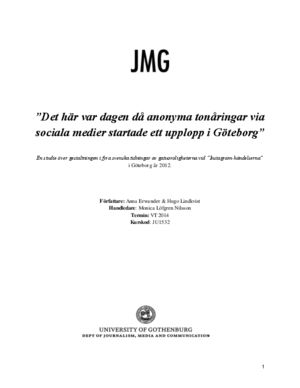”Det här var dagen då anonyma tonåringar via sociala medier startade ett upplopp i Göteborg”
En studie över gestaltningen i fyra svenska tidningar av gatuoroligheterna vid “Instagram-händelserna” i Göteborg år 2012.
On subsequent days, the 18th and 19th of December 2012, large groups of young people gathered to protest in the centre of Gothenburg. The gatherings mainly occurred outside two high schools: Plusgymnasiet and Framtidsgymnasiet. The reason behind the gathering has often been explained by the young people’s reaction to an Instagram account, on which offensive pictures and comments of and about young boys and girls had been published. As a reaction to the protest, police force including helicopters and mounted police, was sent to the streets. Disorder occurred. The high schools were closed. About 20 protesters were temporarily taken in to custody. Ever since, the events has, in Swedish mass-media, often been referred to as the “Instagram-riots” or the “Instagram-uprising”. Our study aims, with help from Ethnographic Content Analysis (ECA) and a quantitative content analysis, to show how this protest was framed in four Swedish newspapers: Aftonbladet, Göteborgs-Posten, Göteborg-Tidningen and Metro Göteborg. The study is based on the theoretical perspective of framing, it’s components, and on earlier research of protests. The mass-media today possess a powerful position. By framing they may affect how the public will understand and evaluate a protest-movement. Our major findings show that violent elements of a “riot”, episodic interpretations of cause and solution, a coverage mainly based on police sources, and a negative tone is prominent in framing the events.

